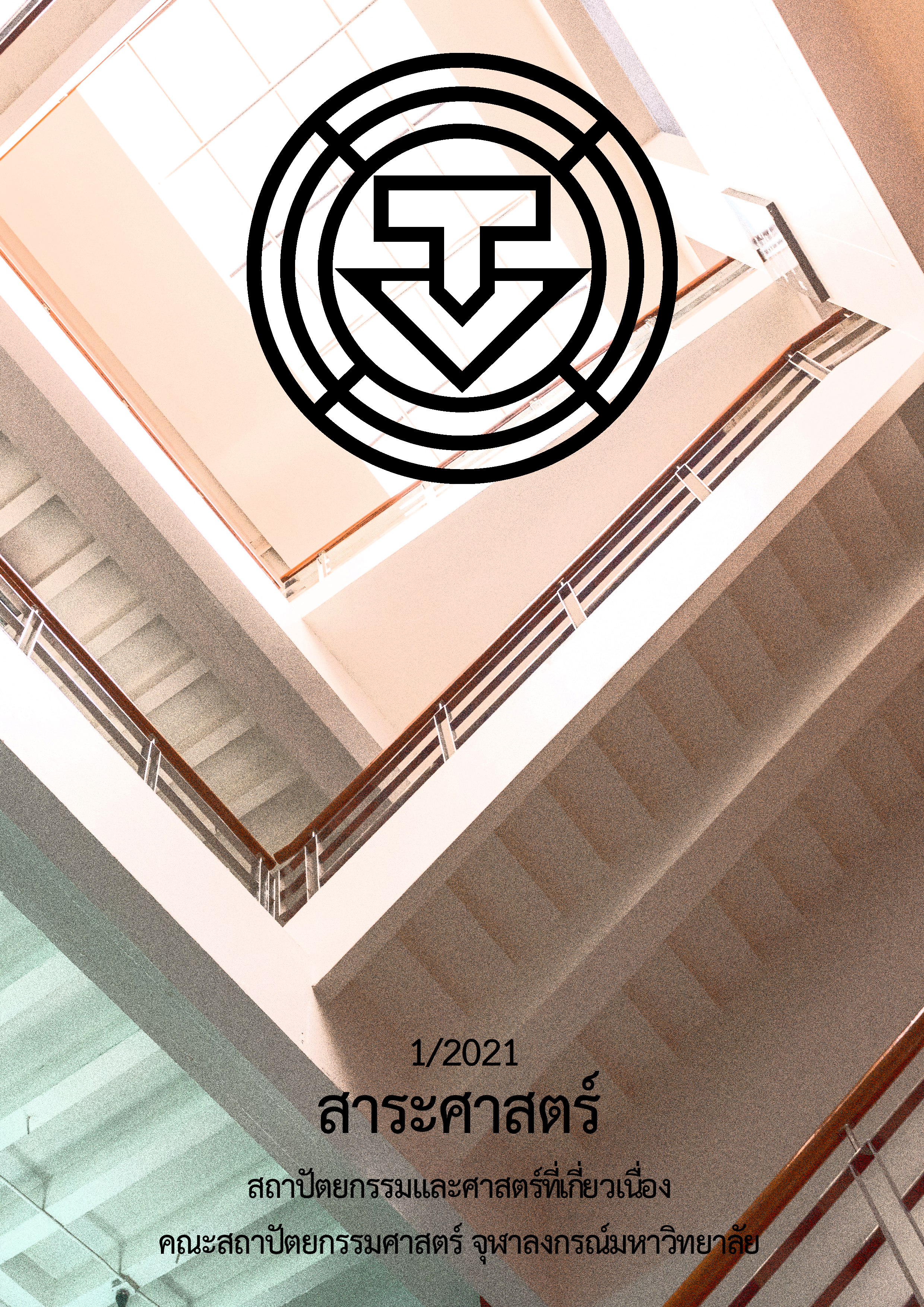The Value Assessment of Matchimawas Temple in Songkhla Oldtown According to The Criteria of World Heritage Site.
Main Article Content
Abstract
Abstract
In order to execute the local municipal policy to nominate Songkhla Old Town for a world heritage city, the location of interest must pass the assessment for the Outstanding Universal Value qualification as well as exhibit the capability to become a world heritage site. This assessment started with the preparation of a location profile for the Tentative List submission, which is the first step of the evaluation process for the world heritage nomination.
The Songkhla Old Town (Bo Yang sub-district) comprised of numerous tangible and intangible cultural heritages. Thus, the research scope of this work was confined within the area surrounding the ancient wall of the old town. Taking into consideration a rapid change induced by town development and the site’s reputation as a tourist attraction, it is critical that a site study is first conducted in this area. This work began with an examination of the cultural heritage sites at a significant segment of the old town, the religious places. The initial investigation uncovered a total of twelve houses of worship which can be classified into three categories as such: six Buddhist temples, five Chinese shrines, and one mosque. The Matchimawas Temple, selected via the community participation process, was a case study for an assessment of the relationship dynamics between the religious places, the old town, and the Songkhla Lake. This investigation could subsequently be used as a guideline for the future assessment of other religious places in the area. The findings would also be beneficial for the nomination of Songkhla Old Town as a candidate for the world heritage city.
In accordance with the world heritage selection criteria (ii) and (v), the attributes of the Matchimawas Temple reflected a connection between the landscape design of the city of Songkhla and the old town cultural motives. The lakefront position of the Matchimawas Temple coincides with the position of the historic city frontier, and the construction components of the building (i.e. granite and clay tiles) also convey an influence of the local wisdom and the cultural exchange between Thailand and China. Therefore, the guideline for future assessments of the Outstanding Universal Values of religious places should highlight the relationship dynamics between the city of Songkhla and its lake, along with the expression of interculturalism deriving from transpired cultural exchanges. Indeed, this remarkable identity of the Songkhla Old Town is sure to provide a competitive advantage for the proposal to attain the world heritage title.
Article Details
References
กรมศิลปากร. (2545). หนังสือวัฒนธรรม พัฒนาการทางประวัติศาสตร์ เอกลักษณ์และภูมิปัญญา จังหวัดสงขลา. กรุงเทพฯ: องค์การค้าของคุรุสภา.
กรมศิลปากร. (2556). ทำเนียบนามแหล่งมรดกทางศิลปวัฒนธรรมในเขตพื้นที่ 5 จังหวัดชายแดนใต้ (โบราณสถานในจังหวัดสงขลา ปัตตานี ยะลา นราธิวาส สตูล). กรุงเทพฯ: กรมศิลปากร.
เกรียงไกร เกิดศิริ และ นันทวรรณ ม่วงใหญ่. (2559, มกราคม-ธันวาคม). การกำหนดคุณค่าตามเกณฑ์การพิจารณาแหล่งมรดกโลกในเอเชียตะวันออกเฉียงใต้ภาคพื้นทวีป (กลุ่ม CLMV): การสังเคราะห์ความรู้เพื่อเป็นแนวทางสำหรับราชอาณาจักรไทย. วารสารหน้าจั่ว, 30, G43-G60.
ชูวิทย์ สุจฉายา. (2552). การอนุรักษ์เมือง. กรุงเทพฯ: ภาควิชาการออกแบบและวางผังชุมชนเมือง คณะสถาปัตยกรรมศาสตร์ มหาวิทยาลัยศิลปากร.
ธนิก เลิศชาญฤทธิ์. (2559). การจัดการทรัพยากรวัฒนธรรม. กรุงเทพฯ: ศูนย์มานุษยวิทยาสิรินธร (องค์การมหาชน).
ธีระยุทธ์ สุวลักษณ์. (2554). พระอุโบสถในเมืองสงขลา สมัยปกครองของเจ้าเมืองตระกูล ณ สงขลา พ.ศ.2318-2444.(วิทยานิพนธ์ปริญญามหาบัณฑิต, มหาวิทยาลัยศิลปากร).
ศรุตม์ เพชรสกุลวงศ์. (2554). การศึกษาสถาปัตยกรรมในเขตเมืองเก่าสงขลา. สงขลา: คณะมนุษยศาสตร์และสังคมศาสตร์มหาวิทยาลัยราชภัฎสงขลา.
สำนักงานนโยบายและแผนทรัพยากรธรรมชาติและสิ่งแวดล้อม. (2556). ชุดความรู้ด้านการอนุรักษ์ คุ้มครองแหล่งมรดกโลก เล่มที่ 3 การเตรียมการขึ้นทะเบียนแหล่งมรดกโลก. กรุงเทพฯ: บริษัท โมโนกราฟ สตูดิโอ จำกัด.
สำนักงานนโยบายและแผนทรัพยากรธรรมชาติและสิ่งแวดล้อม. (2561). คู่มือการนำเสนอแหล่งมรดกทางวัฒนธรรมและแหล่งมรดกทางธรรมชาติเป็นแหล่งมรดกโลก. กรุงเทพฯ: อี.ที.พับลิชชิ่ง.
Australia ICOMOS. (2013). Burra Charter & practice notes. Retrieved 2019, July 15, from https://australia.icomos.org/publications/burra-charter-practice-notes/
Brown, Jessica & Hay-Edie, Terence. (2014). Engaging local communities in stewardship of world heritage a methodology based on the COMPACT experience. Paris: UNESCO.
UNESCO World Heritage Centre. (2005). Town of Luang Prabang. Retrieved 2019, July 15, from https://whc.unesco.org/en/list/479/
UNESCO. (2017). Operational guidelines for the implementation of the world heritage convention. Paris: UNESCO.


